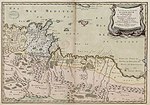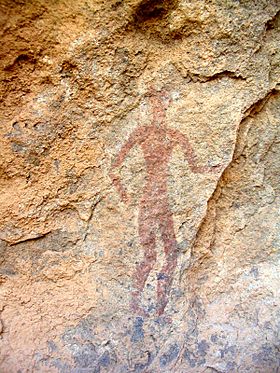| History of Tunisia |
|---|
 |
|
|

Human habitation in the North African region began over one million years ago[citation needed]. Remains of Homo erectus during the Middle Pleistocene period, has been found in North Africa. The Berbers, who generally antedate by many millennia the Phoenicians and the establishment of Carthage, are understood to have arisen out of social events shaped by the confluence of several earlier peoples, i.e., the Capsian culture, events which eventually constituted their ethnogenesis. Thereafter Berbers lived as an independent people in North Africa, including the Tunisian region.
On the most distant prehistoric epochs, the scattered evidence sheds a rather dim light. Also obscure is the subsequent "pre-Berber" situation, which later evolved into the incidents of Berber origins and early development. Yet Berber languages indicates a singular, ancient perspective. This field of study yields a suggested reconstruction of remote millennia of Berber prehistory, and insight into the ancient cultural and lineage relations of Tunisian Berbers—not only with their neighboring Berber brothers, but with other more distant peoples.
The prehistoric, of course, seamlessly passes into the earliest historic. The first meeting of Phoenician and Berber occurred well to the east of Tunisia, well before the rise of Carthage: a tenth-century invasion of Phoenicia was led by a pharaoh of the Berbero-Libyan dynasty (the XXII) of Ancient Egypt.
In the Maghreb, the first written records describing the Berbers begin with the Tunisian region, proximate to the founding there of Carthage. Unfortunately, surviving Punic writings are very scarce aside from funerary and votive inscriptions; remains of the ancient Berber script is also limited. The earliest written reports come from later Greek and Roman authors. From discovery of archaic material culture and such writings, early Berber culture and society, and religion, can be somewhat surmised.
Tunisia remained the leading region of the Berber peoples throughout the Punic era (and Roman, and into the Islamic). Here modern commentary and reconstructions are presented concerning their ancient livelihood, domestic culture, and social organization, including tribal confederacies. Evidence comes from various artifacts, settlement and burial sites, inscriptions, and historical writings; supplementary views are derived by disciplines studying genetics and linguistics.
